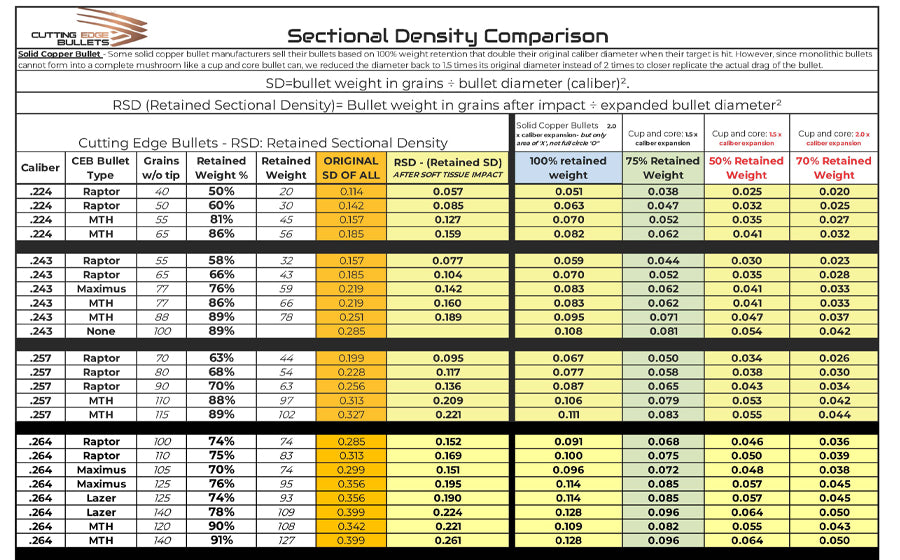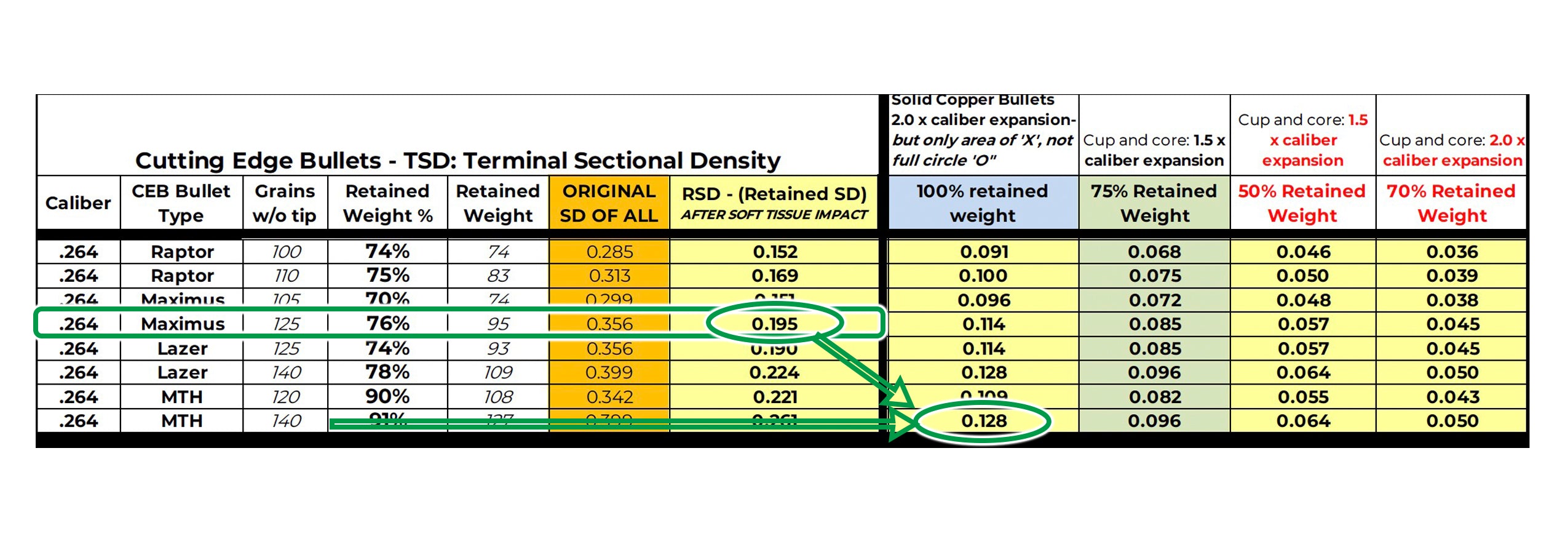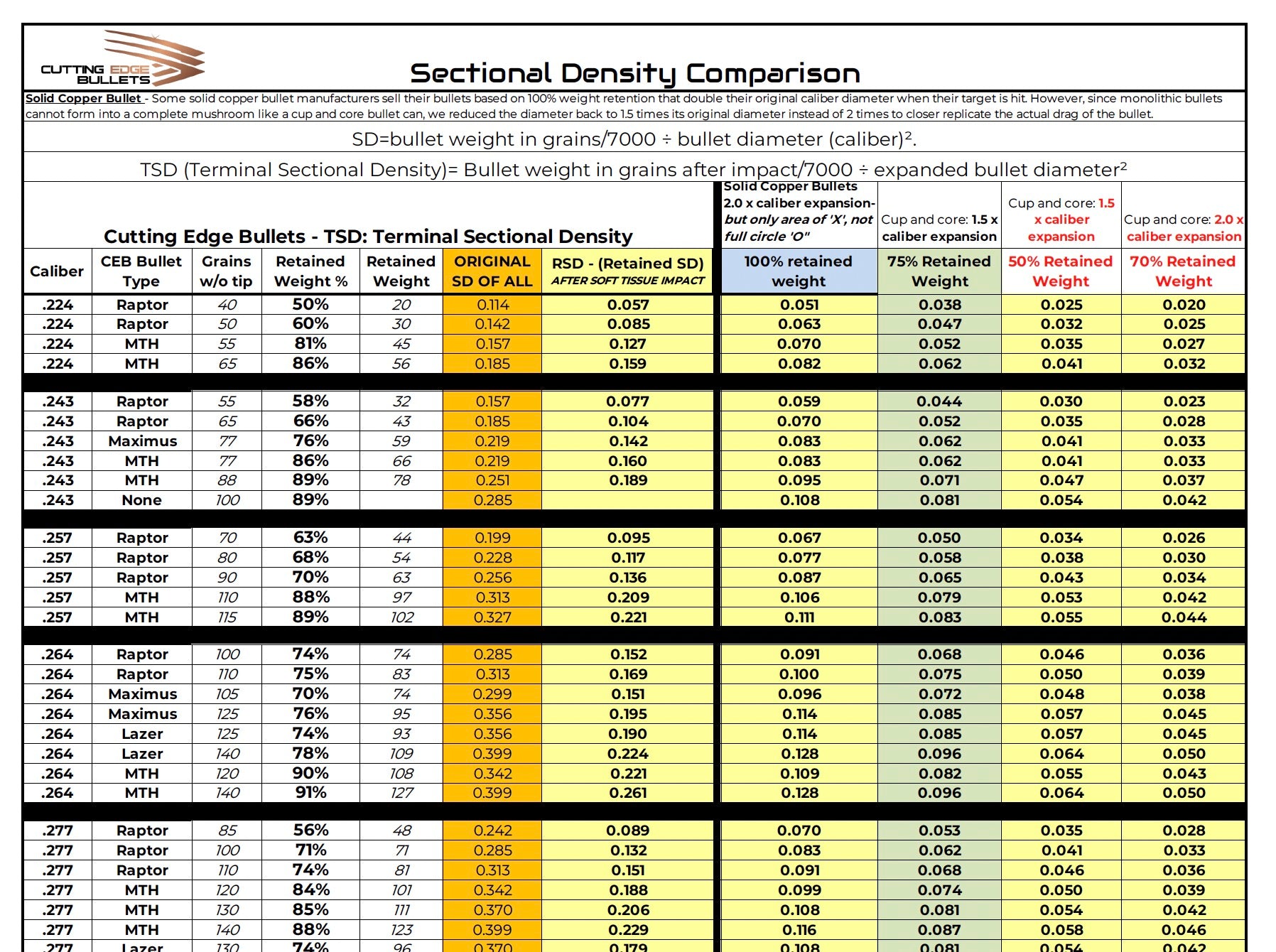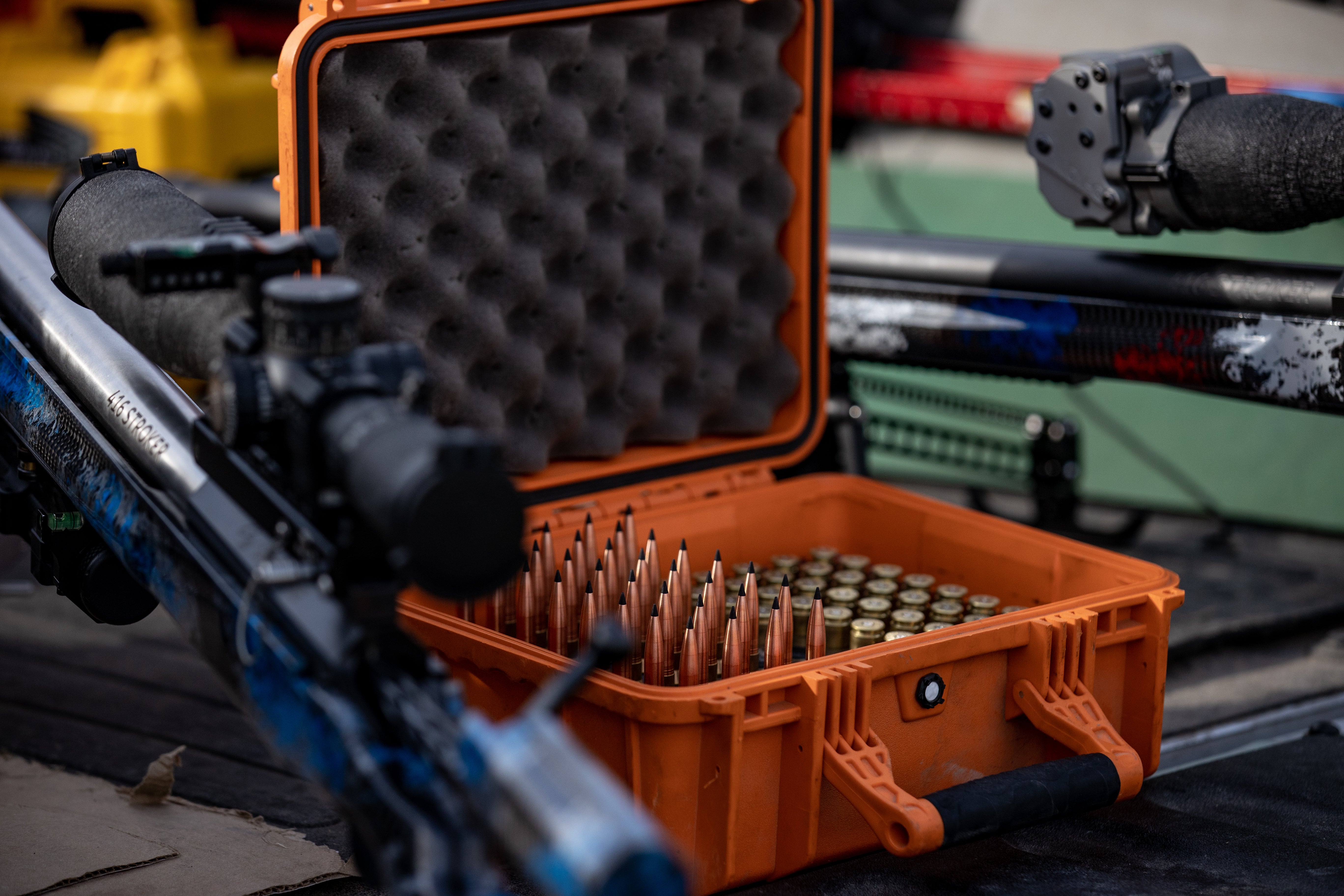Are heavier bullets better for hunting?
The answer, like most things in life, is... maybe.
Often, hunters tend to lean towards heavier bullets because they have been told they penetrate deeper than lighter bullets. Let’s look at why this has become a commonplace way of thinking.
The primary contributing factor to this way of thinking is an increase in the discussion of Sectional Density. For years, finding a bullet's sectional density was the way to determine how well it penetrates.
Sectional Density of a bullet is the ratio of the bullets weight to its diameter. To find the SD of a bullet, the calculation is as follows:
SECTIONAL DENSITY = M/A
M = mass of a bullet in grains/7000
A = diameter of the bullet^2
In short, the heavier a bullet, the higher its sectional density, and therefore, the deeper it penetrates.
However, this equation only finds the sectional density of an unfired bullet BEFORE it deforms. Therefore, the equation is only truly accurate for bullets of a solid, non-expanding design. Most hunting bullets on the market are designed to expand in one way or another to provide terminal performance. The equation is not taking into consideration how much a bullet expands or what the bullet is made from. If we use this equation on two different manufacturers’ 150gr .308 bullet, the conclusion would be that they both penetrate to the same depth. But they do not.
This is why many shooters have taken to calculating Retained Sectional Density as an alternative. The term Terminal Sectional Density is used interchangeably with Retained Sectional Density, and we feel the former is a more accurate title. We will be using Terminal Sectional Density throughout this post. This equation considers what happens after the bullet expands, whether it mushrooms or, in our bullet's case, sheds petals. When a bullet mushrooms or expands, it slows down the bullet drastically, affecting penetration depth. The amount of weight left over after it expands also greatly influences penetration depth.
The TSD is the bullets recovered weight divided by the square of its recovered diameter.
The first step to solving the equation is figuring out how much the diameter increases relative to the bullets starting diameter. This value is anywhere between .75-2x diameter depending on the bullet.
This equation then turns into the following:
TERMINAL SECTIONAL DENSITY = Recovered bullet weight in Grains/7000 / (recovered bullet diameter^2)
Let’s use an example of one of our competitors’ .308 175gr solid copper bullet that retains 100% of its weight and expands to 2x the original diameter.
(175/7000)/*(.308(2))^2) = .0659
Now let’s compare our .308 130gr Raptor which has a retained weight of 92gr after shedding its petals and does not increase in diameter:
(92/7000)/*(.308^2) = .1385
Given those values, the 130gr Raptor out-penetrates the heavier 175gr bullet.
We calculated the TSD of our bullets and compared them to other manufacturers’ bullets of the same weight. We also included varying degrees of weight retention and expansion.
As an example, let’s look at our 6.5mm 125gr Maximus bullet:
The 125gr 6.5mm Maximus retains 76% of its weight after it sheds 4-6 petals, and does not increase in diameter. The TSD of this bullet is .195.
Comparatively, another manufacturer’s solid copper bullet that is 140gr, retaining 100% of its weight, expanding 2x in diameter, has a lower TSD of .128.
Let’s use another example.
Typically hunters switching to our bullets from a 200gr lead core need to go down in weight and use our 180gr bullet. While this sounds like a substantial difference, let’s compare the TSD of our 180gr MTH vs a 200gr lead core.
As you can see above, our 180gr MTH bullet retains 88% of its weight, and does not change in diameter. This gives the TSD of this bullet .239. Mean while the 200gr lead core bullet expanding to 1.5x it’s original diameter and retaining 75% of it’s weight has a TSD of .100.
If you’re interested in checking out more of these comparisons, please check out the PDF file of our chart at the bottom of the page. It is easy to see that although our bullets are lighter for caliber, they will still out-penetrate many other manufacturers’ bullets of a heavier weight in the same caliber. The larger calibers are currently incomplete in this file, and we will be updating it as we collect more data.
In conclusion, when it comes to bullet weight and hunting, it's important to consider more than just the weight. While heavier bullets may have higher sectional density, their retained sectional density may be lower than lighter bullets that are designed to expand and penetrate more effectively. By calculating the terminal sectional density, you can make a more informed decision about which bullet is right for your hunting needs. We hope this information has been helpful and informative.








2 comments
Samantha - Team CEB
JW, whoops, you’re so right! We got so excited about TSD we neglected the SD column. All fixed now. Thanks for bringing this to our attention!
JW, whoops, you’re so right! We got so excited about TSD we neglected the SD column. All fixed now. Thanks for bringing this to our attention!
JW
Your sectional density calculations are wrong. For example: 140 gr, 0.264 has a SD of 0.287 not 0.399. Also 180 gr, 0.308 has a SD of 0.271 not 0.512. etc
Your sectional density calculations are wrong. For example: 140 gr, 0.264 has a SD of 0.287 not 0.399. Also 180 gr, 0.308 has a SD of 0.271 not 0.512. etc